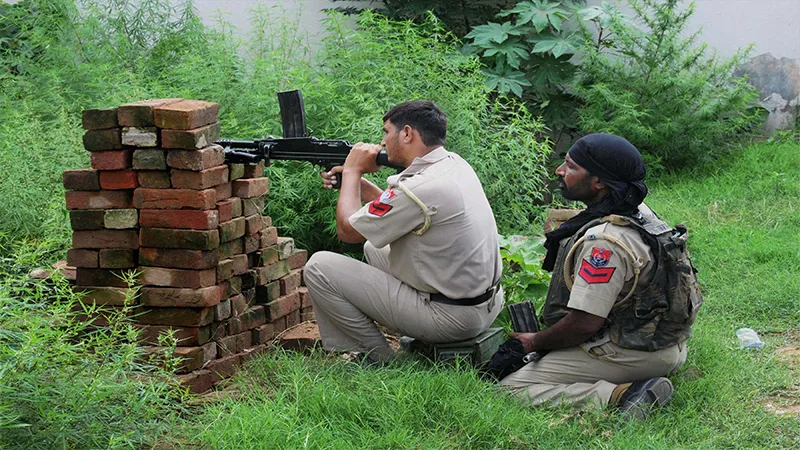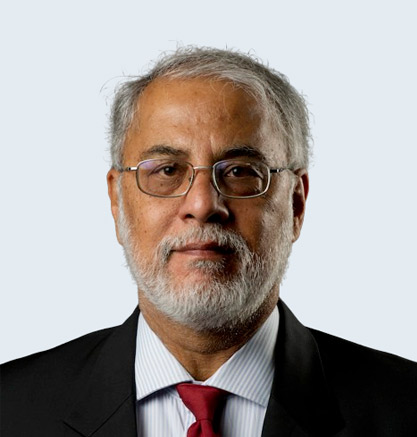The terrorist attack on Dinanagar police station in Gurdaspur district that took the lives of 11 persons, including three militants, on Monday is a puzzle. This is the first major terror attack in Punjab since 2002. The terrorist were dressed in military uniforms favoured by the Lashkar-e-Tayyaba militants who are believed responsible for what are almost trade-mark attacks in the Jammu region, the last one being a set of two consecutive attacks in March this year in Kathua and Samba. Why they chose Punjab is a question that everyone will be asking since the terrorists did not pretend to be Sikh militants, or to be conducting an operation on their behalf.
The modus operandi fits in with the earlier Jammu attacks: Terrorists use moonless nights and Pakistani cross-border firing to breach the international border - or, as the Pakistanis term it, the "working boundary" - in the Jammu region and reach National Highway 1A which runs parallel to the border between Jammu and Pathankot. The fact that the region between the highway and the border is criss-crossed by small nullahs or rivulets makes this task easier. Within an hour of crossing the border, the terrorists are on the highway, where they hijack a vehicle and usually strike Army, BSF or police posts.
Such an attack took place in March 2014 as well in Kathua, when a jawan, a civilian and two terrorists were killed. Later in November, just as Modi and Nawaz Sharif were meeting at Dhulikhel in Nepal at the sidelines of the SAARC summit, four militants who had infiltrated into the Arnia area of Jammu were gunned down at the cost of three jawans and three civilians.
However, this time, after crossing somewhere in the Jammu area, the terrorists hijacked a car and deliberately drove west along National Highway 1A and then looped south-west along the old Pathankot-Gurdaspur road to Dinanagar, some 12 km short of Gurdaspur town in Punjab. There is little doubt that their target had been chosen in advance and they are probably likely to have been aided by GPS devices. So the question is: Why Punjab ?
One theory is that the ISI handlers believe that the time is ripe for another bout of Sikh militancy. After all, a Shiv Sainik, Harvinder Soni was shot at in Gurdaspur in April this year by a young man shouting Khalistani slogans. On Sunday, when Punjab Chief Minister Parkash Singh Badal spoke in Patiala, his meeting was disturbed by pro-Khalistani slogan shouting. These may be straws in the wind, but we need to be able to read the wind direction carefully. The current situation in Kashmir and Punjab is not particularly good. In Punjab, the misrule of the Badals has created a great deal of unrest, but whether it has become a fertile ground for Khalistanis is something that needs to be determined.
On the other hand, this could be a routine warning from the LeT to both the Indian and Pakistani governments against getting too close to each other. Such strikes have often taken place when India and Pakistan are set to improve their relations through dialogue. Thus, the Dhulikhel meet between Modi and Sharif led to the Arnia attack, and now, following their recent meeting in Ufa and the decision to resume a dialogue, the Lashkar has once again struck with the aim of sabotaging the possibility of any normalisation.
Mindful of this, perhaps, Pakistan has been quick to denounce Monday’s attack. "We condemn in the strongest terms the terrorist incident in Gurdaspur, India, today, in which a number of precious lives have been lost," the Foreign Ministry spokesperson said in Islamabad. "There are reports of others having suffered injuries. Our thoughts are with the bereaved families. Pakistan reiterates its condemnation of terrorism in all its forms and manifestations. We extend heartfelt sympathies and condolences to the Government and people of India and wish the wounded speedy and full recovery."
The Gurdaspur attack could be a message within a message to India’s hawkish National Security Adviser Ajit Doval who is now, for all intents and purposes, the GOI’s pointsman for Pakistan. Doval has not been shy in warning Pakistan of dire reprisals if they carry out acts of terrorism against India. The LeT - whether or not on behalf of the Pakistan Army is difficult to say - may now be daring him.
There is, of course, a more outlandish theory - that the Lashkar is now staking a claim to Gurdaspur district. In Pakistani demonology, this district, which had a Muslim majority, was given to India during Partition because of the machinations of Lord Mountbatten and Jawaharlal Nehru. After the release of the testimony of Christopher Beaumont, private secretary to Sir Cyril Radcliffe, the man who drew the Partition line, no serious scholar believes this anymore. But then the Pakistani fire-eaters are no scholars.
Meanwhile all this comes at a somewhat dismal time in Kashmir as well. Young militants who are locals have issued photographs of themselves in military gear, indicating that the training grounds are no longer in Pakistan, but the Valley itself. In the meantime, the Pakistani and Islamic State flags have become the symbols of protest.
As of now, there are no real indications that the Islamic State is making any serious inroads into Kashmir, or for that matter Pakistan. However, what is happening is that the idea of the Islamic State seems to be gaining some traction with sections of the Muslim youth. The IS itself is a dangerous mutation of violent Islamist extremism and, like all mutants, its origin was unexpected, and its consequences can be difficult to predict.
Unfortunately, the Centre is doing little to resolve an outstanding problem in this most vulnerable state. Narendra Modi’s advisers may be hoping that the Kashmir problem will go away because the BJP and the PDP have managed to get a functional government going but the situation on the ground may actually be getting more complex. In all this, Lashkar actions such as the attack in Gurdaspur can have unforeseen and dangerous consequences.
(The writer is a Distinguished Fellow at Observer Research Foundation, Delhi)
Courtesy: http://thewire.in
The views expressed above belong to the author(s). ORF research and analyses now available on Telegram! Click here to access our curated content — blogs, longforms and interviews.

